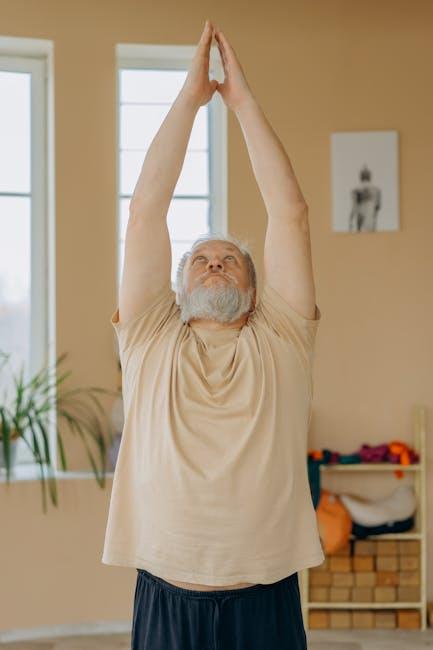In the pursuit of peak physical performance, athletes and fitness enthusiasts often focus on strength, endurance, and speed. However, an often-overlooked component of a well-rounded fitness regimen is flexibility training. Incorporating flexibility exercises can enhance your overall performance, reduce the risk of injuries, and improve recovery times. This article will guide you through the essentials of adding flexibility training to your routine, providing practical tips and techniques to help you unlock your body’s full potential. Whether you’re a seasoned athlete or just starting your fitness journey, embracing flexibility training can elevate your performance to new heights.
Understanding the Importance of Flexibility in Athletic Performance
Incorporating flexibility training into your routine is a game-changer for enhancing athletic performance. Flexibility is not just about achieving a wider range of motion; it’s about optimizing your body’s efficiency, reducing the risk of injuries, and improving overall performance. A flexible athlete can execute movements with greater ease, which translates to better technique and faster recovery times.
- Injury Prevention: Flexible muscles and joints are less prone to strains and sprains, allowing athletes to push their limits safely.
- Improved Technique: Enhanced flexibility allows for more precise and controlled movements, contributing to better form and technique in various sports.
- Increased Strength: By improving your range of motion, you can activate more muscle fibers during exercises, leading to greater strength gains.
- Faster Recovery: Flexibility training aids in reducing muscle soreness and stiffness, helping you recover faster after intense workouts.
Integrate stretching routines, such as dynamic stretches before workouts and static stretches post-exercise, to maintain and improve your flexibility. Prioritizing flexibility is not just an add-on; it’s a fundamental aspect of athletic success.

Key Flexibility Exercises to Enhance Mobility and Strength
Enhancing your mobility and strength through targeted flexibility exercises can transform your performance across various physical activities. Incorporate these exercises into your routine to unlock greater range of motion and resilience:
- Dynamic Stretching: Initiate your sessions with dynamic movements like arm circles, leg swings, and torso twists. These exercises are essential for warming up muscles and increasing blood flow, preparing your body for more intensive activities.
- Yoga Poses: Integrate poses such as the downward dog, pigeon pose, and cat-cow stretches. These not only improve flexibility but also enhance balance and core strength, contributing to a holistic approach to mobility.
- PNF Stretching: Proprioceptive Neuromuscular Facilitation (PNF) involves a cycle of contracting and relaxing muscles. This method is particularly effective in increasing flexibility and is ideal for those seeking advanced flexibility gains.
- Foam Rolling: Utilize a foam roller to target tight areas and release muscle tension. Foam rolling can improve tissue flexibility and reduce the risk of injury, acting as a crucial component of your post-workout recovery.
By integrating these exercises consistently, you will notice improved performance, reduced muscle stiffness, and a significant boost in overall physical well-being.
Integrating Flexibility Routines into Your Existing Workout Plan
To elevate your workout regimen, consider weaving flexibility routines seamlessly into your existing plan. Begin by identifying moments in your routine where flexibility can complement your activities. For instance, if you’re a runner, dynamic stretching before hitting the pavement can enhance your stride and reduce injury risk. Post-workout static stretching is equally crucial, as it helps cool down your muscles and improve long-term flexibility. Aim to incorporate at least 10-15 minutes of these exercises into your sessions.
- Yoga sessions: Dedicate one or two days a week to yoga, focusing on poses that enhance both flexibility and core strength.
- Pilates: Integrate Pilates exercises into your routine to improve flexibility while also boosting muscle endurance.
- Foam rolling: Use a foam roller for myofascial release to enhance muscle elasticity and reduce soreness.
By regularly including these flexibility practices, you’ll not only enhance your performance but also build a more resilient and adaptable body.
Expert Tips for Measuring and Tracking Flexibility Progress
Enhancing your flexibility is a journey that requires consistent measurement and tracking. Here are some expert tips to keep you on the right path:
- Set Clear Goals: Begin by defining specific flexibility goals. Whether it’s achieving a full split or simply touching your toes, having a clear target will guide your progress.
- Use a Flexibility Chart: Document your current range of motion and update it regularly. This visual representation helps in identifying improvements and areas that need more focus.
- Leverage Technology: Consider apps or wearables that track your flexibility exercises and improvements. These tools can offer valuable insights and reminders to keep you motivated.
- Incorporate Regular Assessments: Schedule periodic flexibility assessments. Simple tests like the sit-and-reach or shoulder stretch can be excellent indicators of progress.
- Listen to Your Body: While tracking metrics is crucial, it’s equally important to be mindful of how your body feels. Pain is a signal to adjust your routine and avoid injury.
By integrating these strategies, you’ll not only monitor your flexibility advancements effectively but also ensure a balanced approach to your training regimen.




